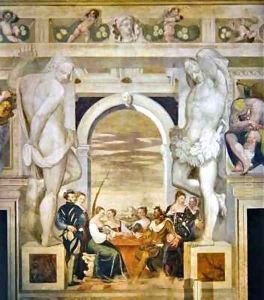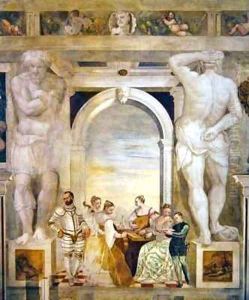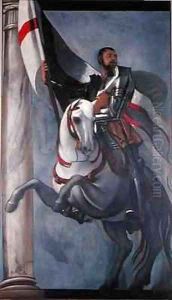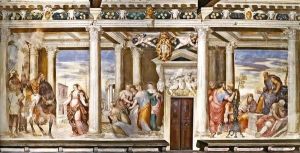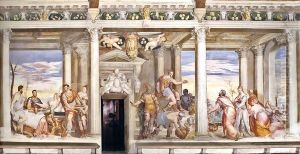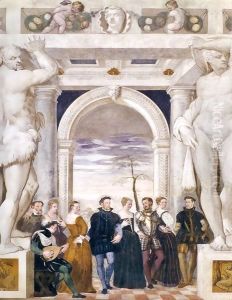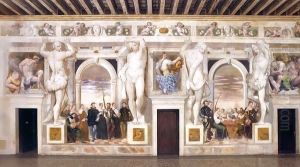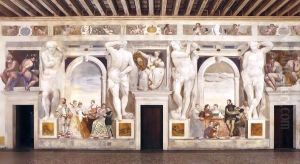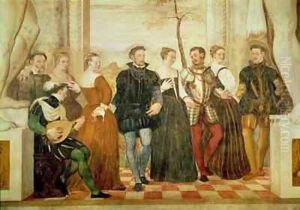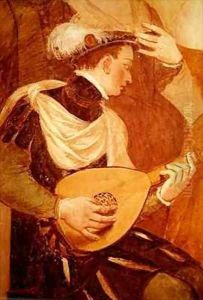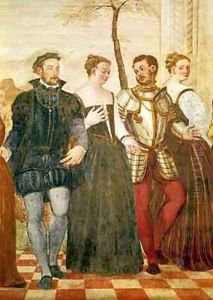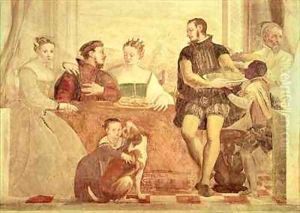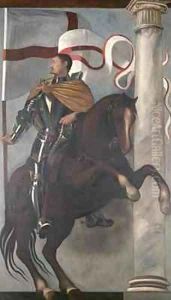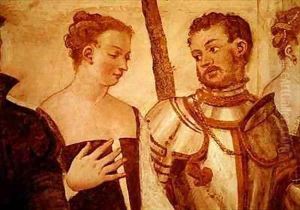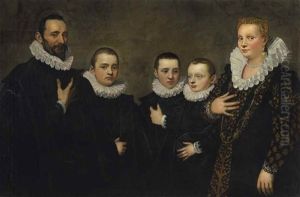Giovanni Antonio Fasolo Paintings
Giovanni Antonio Fasolo was an Italian painter of the late Renaissance, active mainly in the region of Veneto, Italy. Born around 1530, Fasolo's work is often associated with the Mannerist style, a movement that emerged in the later years of the Italian Renaissance and is characterized by its complex compositions, elongated figures, and often vibrant use of color. Fasolo's contributions to art are not as widely recognized as those of his contemporaries, such as Titian or Tintoretto, yet his work provides an important glimpse into the artistic transitions of the period.
Fasolo began his career as a pupil of Giovanni Antonio de' Sacchis, also known as Il Pordenone, one of the leading painters of the Venetian school. Under de' Sacchis, Fasolo honed his skills and developed a keen eye for the dramatic interplay of light and shadow, a characteristic that would come to define much of his later work. Following his apprenticeship, Fasolo embarked on a successful career as a fresco painter, contributing to the decoration of numerous public buildings and churches throughout Veneto.
One of his most notable commissions was the fresco decoration of the Villa Caldogno in Caldogno, attributed to the architect Andrea Palladio. These frescoes showcase Fasolo's mastery of perspective and his ability to integrate architectural elements with painted scenes, creating immersive and dynamic compositions. His work at the Villa Caldogno remains one of the most celebrated examples of his talent and provides valuable insight into the artistic and cultural milieu of 16th-century Italy.
Despite his success, details about Fasolo's life remain relatively scarce. His career was tragically cut short when he died in a fall from a scaffold while working on a fresco in 1572. This untimely death limited the scope of his oeuvre but did not diminish his impact on the Italian Renaissance. Today, Giovanni Antonio Fasolo is remembered for his contributions to the development of Mannerist painting in Veneto and his role in the broader narrative of Italian art history.
